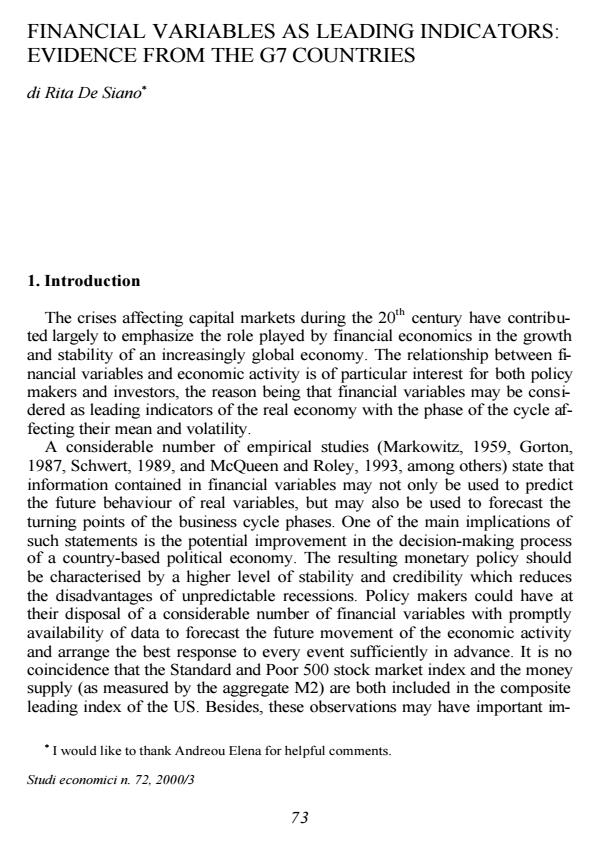Financial Variables as Leading Indicators: Evidence from the G7 Countries
Titolo Rivista STUDI ECONOMICI
Autori/Curatori Rita De Siano
Anno di pubblicazione 1 Fascicolo 2000/72
Lingua Inglese Numero pagine 34 P. Dimensione file 148 KB
DOI
Il DOI è il codice a barre della proprietà intellettuale: per saperne di più
clicca qui
Qui sotto puoi vedere in anteprima la prima pagina di questo articolo.
Se questo articolo ti interessa, lo puoi acquistare (e scaricare in formato pdf) seguendo le facili indicazioni per acquistare il download credit. Acquista Download Credits per scaricare questo Articolo in formato PDF

FrancoAngeli è membro della Publishers International Linking Association, Inc (PILA)associazione indipendente e non profit per facilitare (attraverso i servizi tecnologici implementati da CrossRef.org) l’accesso degli studiosi ai contenuti digitali nelle pubblicazioni professionali e scientifiche
Financial Variables as Leading Indicators: Evidence from the G7 Countries (by Rita De Siano) - ABSTRACT: This study analyses the behaviour of financial variables, such as the stock market return index and interest rates, over the business cycle phases in order to ascertain whether they can be used as leading indicators of the real economy. The analysis, applied to the G7 countries, is based on an AR-GARCH model, considered to be the best in modelling the dynamic behaviour of the conditional mean and volatility for high frequency speculative price data. The phase of the business cycle appears to have a considerable effect on the behaviour and predictability of both the conditional moments. Evidence is given that mean and volatility may be better forecasted during expansion than during recession. The regular reaction of financial variables to the approach of any phase implies that they may be considered as appropriate leading indicators of real economic activity. The higher the frequency of the data, the better the accuracy of the analyses and the information they contain. JEL Classification: C5, C8, E3, E4, G1.
Rita De Siano, Financial Variables as Leading Indicators: Evidence from the G7 Countries in "STUDI ECONOMICI " 72/2000, pp , DOI: